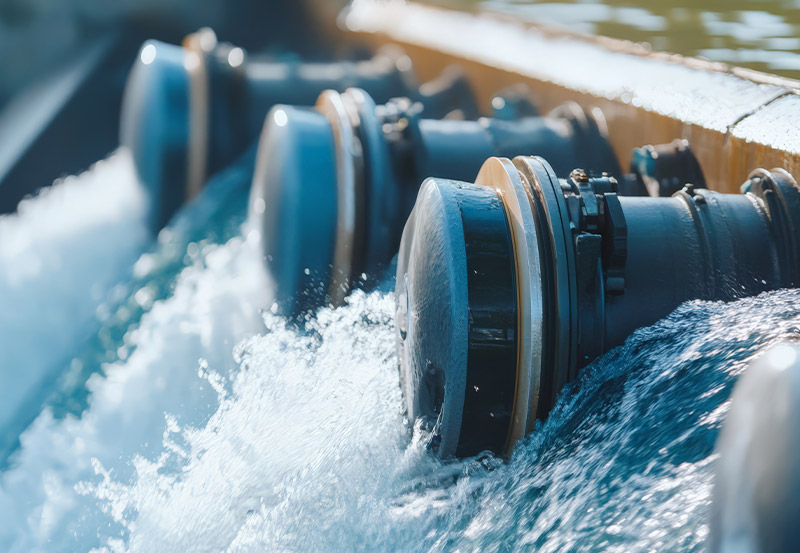What are PCHs and CGHs?
According to ANEEL, small-scale power generators can be classified as Small Hydroelectric Power Plants (PCH) and Hydraulic Generating Plants (CGH). Small Hydroelectric Power Plants are plants with reservoirs of up to three square kilometers and installed capacity between 1 and 30 MW. Hydraulic Generating Plants, on the other hand, are plants with a maximum capacity of up to 1 MW.
Because they are smaller, these power plants are cheaper to build and cause less environmental damage, as they do not flood large areas, preserving the natural habitat of the species that live near them. Furthermore, they can be built on rivers with lower flow rates, which allow for the decentralization of electricity generation in the country.
Regarding the technical aspects, in addition to the installed capacity, there are other characteristics that differentiate these power generators, such as the licensing process. But let’s differentiate them better. A PCH basically depends on the completion of an Inventory Study, which will analyze the hydraulic potential of the river where it will be installed, and a basic project, which is nothing more than a technical detail, being the main study of a PCH, whose analysis and approval is the responsibility of ANEEL. In a CGH, on the other hand, the licensing process is much simpler, since the preparation of the inventory and the basic project are not necessary and the regulatory and inspection agency only needs to be notified of the intention to implement it.
Another difference between CGHs and PCHs is their total implementation period. While the total implementation period for a PCH is, on average, five years, for a CGH it is two and a half years.
Regarding installed capacity in Brazil, according to information from ANEEL, there are currently 463 small hydroelectric plants throughout Brazil, totaling an installed capacity of 4,658,669 kW and at least 30 under construction. There are also 446 CGHs in the country, with a total capacity of 272,886 kW.
Large-scale hydroelectric plants (UHE), with an installed capacity of more than 30 MW, are characterized by having large reservoirs, a feature that allows them to operate for some time during dry periods. But where do PCHs fit into this system? As an alternative to hydroelectric plants during periods of flooding, when the plants operate with run-of-river water, small hydroelectric plants come into operation, generating the capacity of large reservoirs to store high levels of water. Thus, when the dry season begins, the hydroelectric plants can operate at full capacity, since during this same period the small reservoirs of the PCHs are unable to generate energy. This complementarity between the two types of hydroelectric plants is extremely important to maintain continuous generation, without affecting the consumption and development of the country, in addition to the fact that the PCHs provide a complement to the loads supplied to small urban centers and rural regions.
The attractiveness of the PCH and CGH sector is largely explained by the high operating margins achieved with low generation/maintenance costs and by the fact that it is a source with a long history of discharge measurements, which reduces the risk of effective generation being lower than planned.
There are several factors that make the construction of PCH and CHG viable, including economic and socio-environmental factors, not to mention the ability to keep the nearby region supplied with energy, generating local growth and development.
from: https://abrapch.org.br/2014/03/o-que-sao-pchs-e-cghs/




